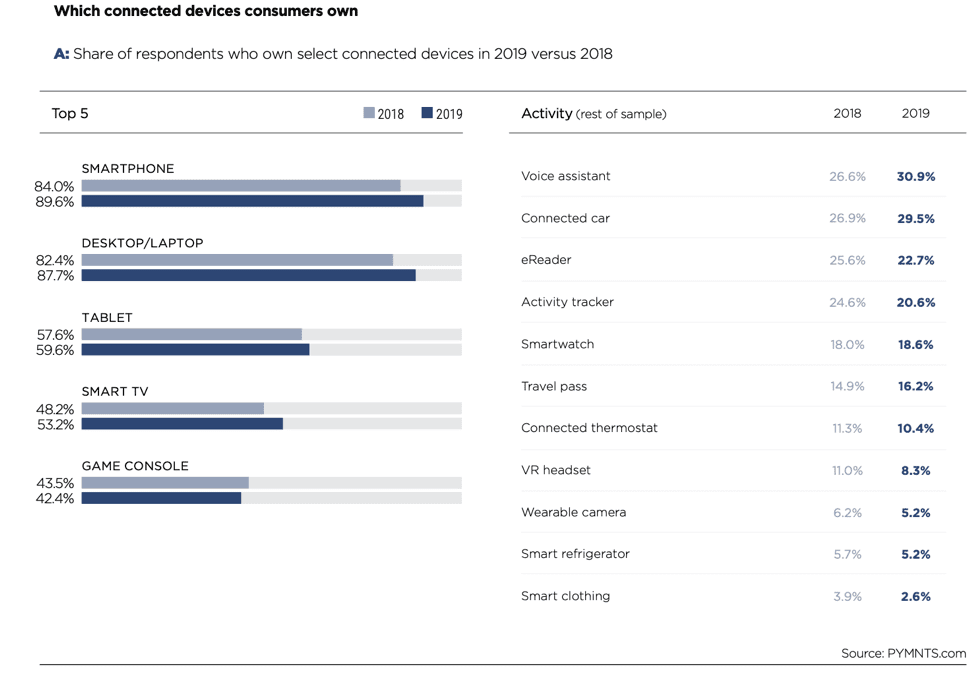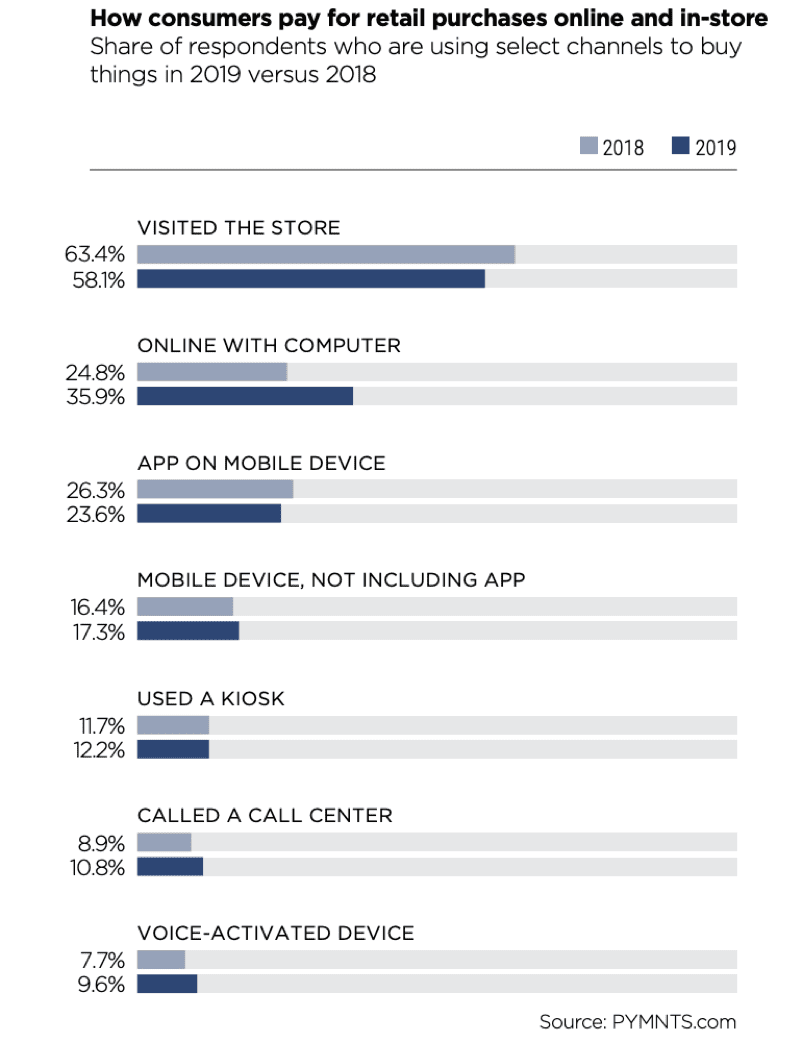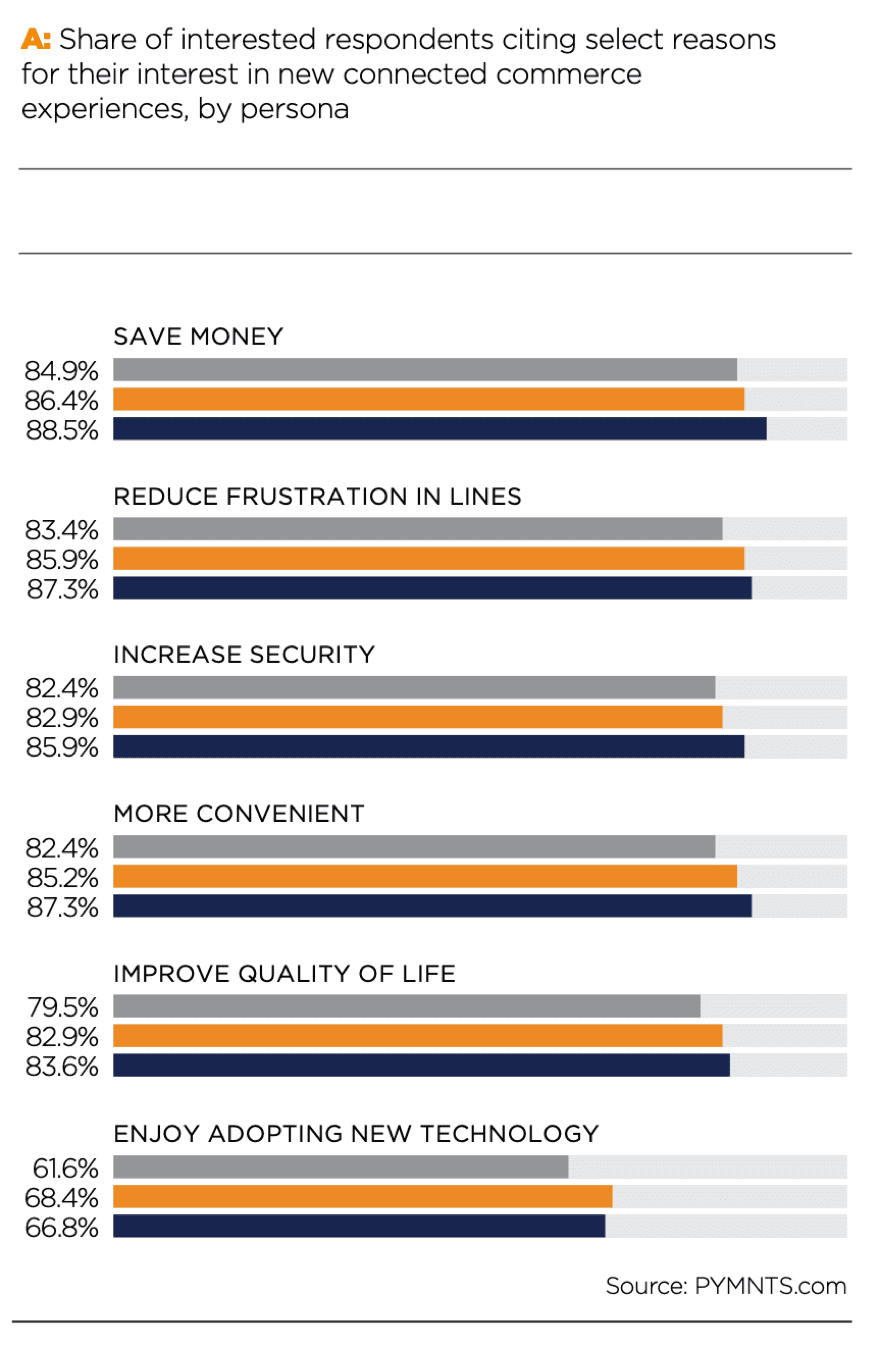
Increasingly, the physical and digital worlds are converging. Consumers own and use connected devices more than ever before, while brick-and-mortar retail is transforming the in-store experience by making it more digital.
That’s exactly what Walmart and Mattel are trying to do using an interactive video store featuring different “floors” with toys. The store called KidHQ lets users browse through toys and has interactive “choose-your-own-adventure” type features.
How We Will Pay 2019 showcases analysis of consumers’ ownership and usage of connected devices and their role in enabling everyday connected purchasing experiences.
Connected Device Usage
Connected devices give consumers the freedom to shop anytime, anywhere — and now while doing anything. Convenience and saving time drive those behaviors, giving consumers the opportunity to “multitask commerce” as part of their everyday lives.
When consumers were asked how many of the most common 16 connected devices they own, the number of average devices (4.9) is roughly the same as last year (4.4). Yet, the mix of devices is very different. Ownership of devices that provide access to broad digital ecosystems, like smartphones, desktops, laptop computers and voice assistants, has proliferated. At the same time, the ownership of connected devices that serve highly specific purposes, like activity trackers and eReaders, is waning.

One in five consumers made purchases using connected devices while watching TV, reading for pleasure, engaging in recreational activities, commuting to work or even while at the office. In fact, more than three-quarters of consumers (76 percent) made purchases during at least one of their everyday activities, every day.
In-Store
This year, there was also a slight uptick in the number of consumers who reported going to physical establishments to shop or to eat a meal. Visits to grocery stores were up by 13 percent over last year — which reflects both an increase in visits to grocery stores to browse products in-store as well as to pick up groceries that were ordered ahead.
Eighty-four percent of consumers shopped for groceries at brick-and-mortar locations in 2019, representing an increase from 74 percent in 2018. This figure represents an aggregate increase between consumers shopping for groceries in-store as well as picking them up at physical locations after having remotely ordered them beforehand.

About one-quarter of consumers reported making purchases using their computers in 2018, with 24 percent using mobile apps and 7.7 percent using voice-activated devices. Last year, consumers reported that purchasing in the physical store was still how most purchases were made. This year, 8.4 percent fewer consumers report making a purchase in a physical store.
While consumers might embrace new retail technologies like the abovementioned interactive video store at Walmart, engaging in cashierless retail or using interactive kiosks, they don’t necessarily trust retailers to innovate connected commerce experiences. In the study, Visa (44 percent), PayPal (43 percent), Amazon (40 percent), their banks (33 percent) and Mastercard (32 percent) were cited as those trusted the most to innovate. Amazon was the only retailer that made the top 10.
One-fifth had faith in Walmart (21.6 percent) while “favorite retailers,” generally had interest from 9.4 percent of consumers.
App Fatigue
Consumers also appear to be more selective about the apps that they use with those devices to enable new connected commerce use cases. Specifically, there is waning interest in apps for auto paying at gas stations and restaurants.
Though these declines appear modest, this is the first time there has been a dip in interest in use cases for which there has been a lot of investment by innovators to “fix” a broken purchasing experience.
But nearly three-fourths (72.7 percent) of all consumers indicated interest in new ways of shopping. Why? First and foremost to save money (84.9 percent) but also to reduce frustration related to standing in lines (83.4 percent) which implies that in-store factors matter, and to increase security and convenience (82.4 percent for each).

Consumers are curating their device collections and reshaping the connected commerce landscape. It is increasingly clear that, for many consumers, connected devices’ primary benefit lies in their ability to provide easy, ubiquitous and universal access to retail goods and services, anywhere, anytime and now while doing anything.